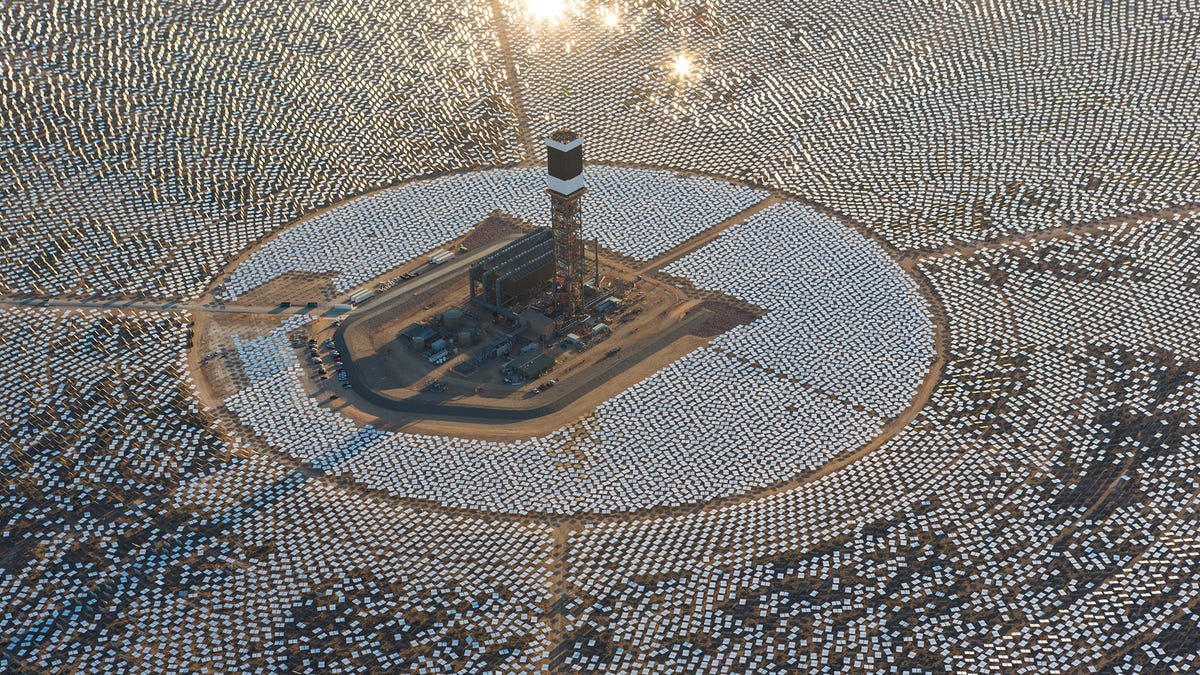World's largest solar thermal plant is on the grid
The "tower power" plant, which uses more than 300,000 mirrors to reflect sunlight, starts delivering electricity to customers in California.

While the East Coast feels the brunt of yet another winter storm, Southern California's abundant sunshine is getting put to good use. On Thursday, the world's largest solar thermal plant began delivering electricity to customers.
The Ivanpah Solar Electric Generating System -- jointly owned by NRG Energy, Google, and BrightSource Energy -- can produce 392 megawatts of solar power at full capacity. According to NRG Energy, that's enough "electricity to provide 140,000 California homes with clean energy and avoid 400,000 metric tons of carbon dioxide per year, equal to removing 72,000 vehicles off the road." San Francisco-based Bechtel was the engineering, procurement, and construction contractor on the project.
Sprawled across roughly 5 square miles of federal land in California's Mojave Desert, the plant has more than 300,000 software-controlled mirrors that reflect sun to boilers at the top of three 450-foot high towers. The focused blasts of sun rays turn water in the boilers into steam, which then drives power generators. It's basically a large-scale version of using a magnifier to melt army men -- except this version creates usable electricity.
For Google, which put $168 million into the project, investing in green energy is nothing new. The Web giant has invested in several solar and wind projects and says that over 34 percent of its operations are currently powered by renewable energy.
While the companies behind the plant are touting the benefits of clean energy, it has raised other environmental concerns. Apparently, some birds that fly through the intense heat around the towers -- which can reach 1,000 degrees Fahrenheit -- are dying or suffering from burned feathers, reported The Wall Street Journal.
Updated, February 19 at 11:13 a.m. PT with additional details.

